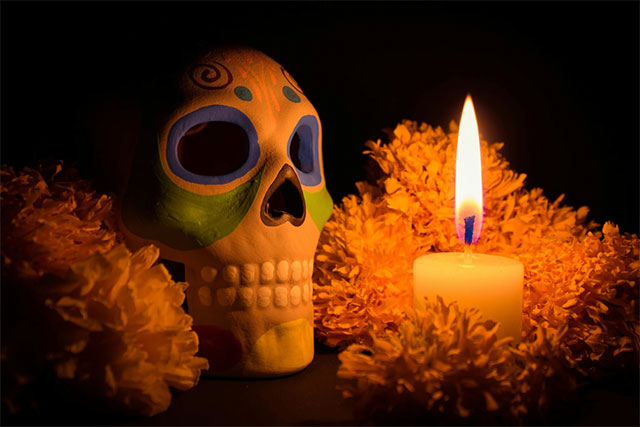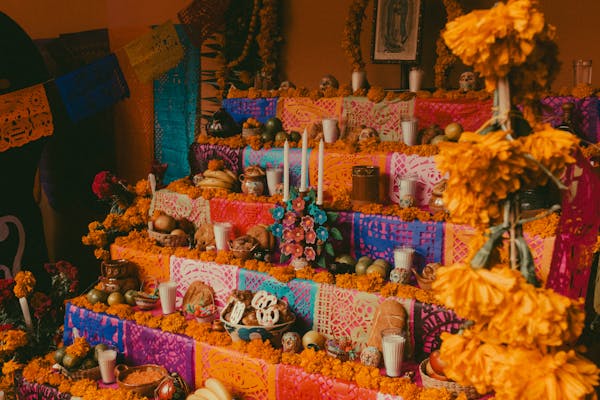Day of the Dead History
Origins of Day of the Dead
The origins of the Day of the Dead, or Día de los Muertos, can be traced back to ancient roots and indigenous traditions. This celebration is deeply rooted in the cultural practices of the indigenous peoples of Mexico, particularly the Aztecs, who had a profound connection to the cycles of life, death, and rebirth.
Long before the Day of the Dead became a recognized holiday, indigenous groups in Mesoamerica held rituals honoring the deceased. These civilizations believed that death was a natural part of the cycle of life and that the dead continued to exist in a different realm. The practice of honoring the dead was not seen as a time of mourning but as a celebration of the lives of the deceased and their continued presence in the lives of the living.
The Aztecs held an annual festival that involved elaborate rituals, offerings, and the creation of altars adorned with skulls, flowers, and food. Many elements of this ancient festival can be seen in the modern celebration of the Day of the Dead, such as the use of marigolds, sugar skulls, and altars (ofrendas).
With the arrival of Spanish colonizers in the 16th century, the indigenous rituals honoring the dead began to merge with Catholic traditions. The Spanish brought with them the Catholic holidays of All Saints' Day (November 1) and All Souls' Day (November 2), which were intended to honor saints and pray for the souls of the departed.
Over time, the indigenous practices and Catholic beliefs blended, resulting in the unique celebration that is the Day of the Dead.
Significance and Symbolism
The Day of the Dead is a deeply meaningful celebration that focuses on honoring and remembering deceased loved ones. It is a time for families to come together, not in mourning, but in joyous remembrance, embracing the belief that death is a continuation of the journey rather than an end.
The Day of the Dead is rich in symbolism, with many elements holding special significance. Marigolds, known as cempasúchil in Spanish, are one of the most recognizable symbols of the celebration. These bright orange and yellow flowers are believed to guide the spirits to the ofrendas with their vibrant color and strong scent. Marigolds are often scattered on graves and used to create intricate pathways that lead the spirits back to their families.
Sugar skulls, or calaveras, are another iconic symbol. These colorful, decorative skulls are often inscribed with the names of the deceased and are placed on altars as a reminder of the cycle of life and death. The skulls, made from sugar or chocolate, serve as a sweet tribute to the dead, blending the macabre with the festive.
Papel picado, or perforated paper, is a decorative element commonly seen during the Day of the Dead. These brightly colored paper banners are intricately cut to depict images of skeletons, flowers, and other symbols of the holiday. Papel picado represents the fragility of life and serves as a reminder that life is fleeting but beautiful. The fluttering banners add a lively and celebratory atmosphere to the festivities, reinforcing the joyful nature of the occasion.
One of the most iconic aspects of the Day of the Dead is the creation of altars, known as ofrendas, which are central to the celebration. These altars are carefully crafted spaces dedicated to deceased loved ones and are adorned with a variety of offerings that reflect the personality and preferences of the departed.
Traditional Customs and Rituals
The Day of the Dead is marked by a series of traditional customs and rituals that have been passed down through generations.
In the days leading up to the Day of the Dead, families prepare by visiting the gravesites of their loved ones. It is customary to clean and tidy the graves, removing any debris and giving the tombstones a fresh coat of paint if needed. On the Day of the Dead, families gather at cemeteries to honor their ancestors. They bring with them offerings, flowers, and candles to decorate the tombstones of their loved ones.
A key component of the Day of the Dead is the offering of favorite foods, drinks, and personal belongings to the deceased. These offerings, placed on the ofrendas or at the gravesites, are meant to nourish and comfort the spirits as they return to the world of the living. Families often prepare traditional foods like pan de muerto (bread of the dead), tamales, and mole, along with the favorite dishes and drinks of their departed loved ones. Personal items, such as a favorite book, a piece of clothing, or a beloved musical instrument, may also be included in the offerings.
Celebrations in Mexico
In Mexico, the Day of the Dead is celebrated with vibrant and heartfelt traditions that involve the whole community. The festival is a rich tapestry of cultural expressions, blending family devotion with lively public festivities. In various countries with Mexican communities, the Day of the Dead is celebrated with local adaptations. In the United States, particularly in areas with significant Mexican-American populations, festivals often feature traditional elements such as altars and marigolds, combined with local cultural influences.
Family is at the heart of Day of the Dead celebrations. The preparation of altars, cleaning of gravesites, and creation of offerings are collective activities that involve not just immediate family members but extended relatives and neighbors as well. This communal effort reinforces the bonds of family and the importance of remembering and honoring ancestors together. Families gather to share stories, food, and experiences, creating a space where the living and the dead are united in celebration.
Communities also play a significant role in the festivities, with many towns and cities organizing public events and gatherings. The communal nature of the celebration fosters a sense of unity and collective memory, allowing people to come together to honor their ancestors and celebrate their cultural heritage.
Parades, Processions, and Lively Street Festivals
One of the most striking features of Day of the Dead celebrations in Mexico is the lively parades and street festivals that take place. Cities such as Mexico City, Oaxaca, and Puebla host elaborate processions that feature participants dressed as skeletons and adorned in colorful costumes. These parades often include floats decorated with flowers, altars, and images of the deceased.
Street festivals are also a key part of the celebration, with markets selling traditional crafts, food, and decorations. These festivals are filled with music, dancing, and vibrant displays of local culture, creating an atmosphere of joy and celebration that permeates the streets.
Traditional Music, Dance, and Performances
Music and dance are integral to the Day of the Dead festivities, adding rhythm and energy to the celebrations. Traditional Mexican music, such as mariachi and folk tunes, is performed throughout the festival, providing a lively backdrop to the activities. Dance performances often feature traditional dances that depict the journey of the dead or celebrate the cultural heritage of the region.
In addition to music and dance, theatrical performances and storytelling sessions are common. These performances may recount myths and legends related to the dead or explore the cultural significance of the holiday. The combination of music, dance, and performance creates a festive and immersive experience, allowing participants to engage with the rich traditions of the Day of the Dead.
Day of the Dead Around the World
As the Day of the Dead has gained global recognition, its traditions and practices have spread beyond Mexico, adapting to different cultures and contexts while maintaining its core significance.


